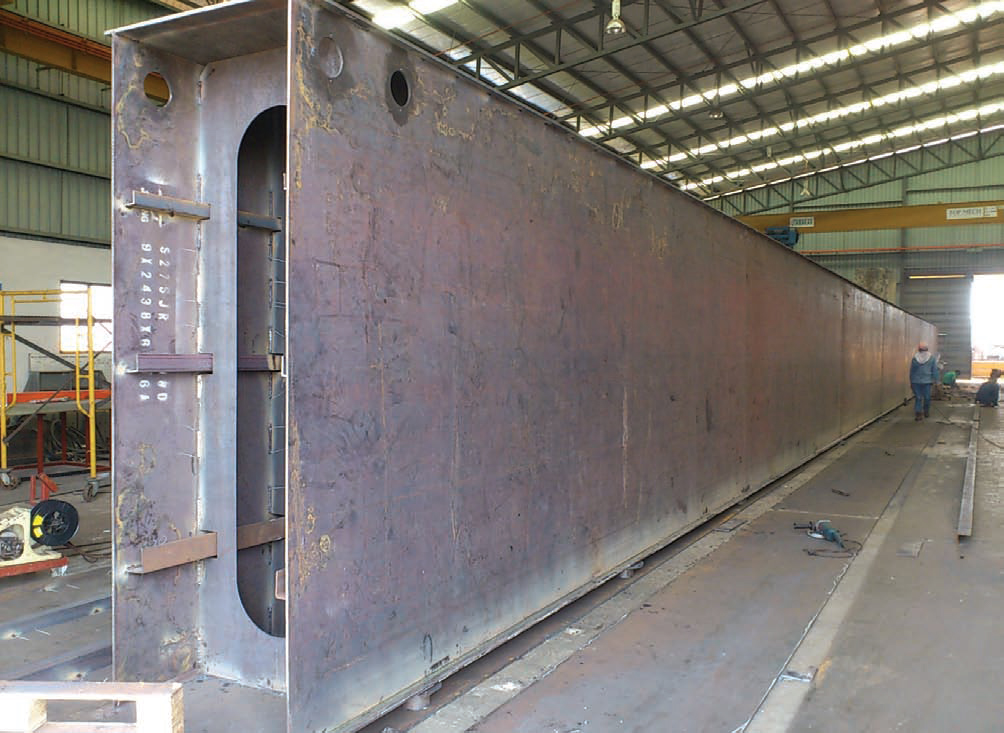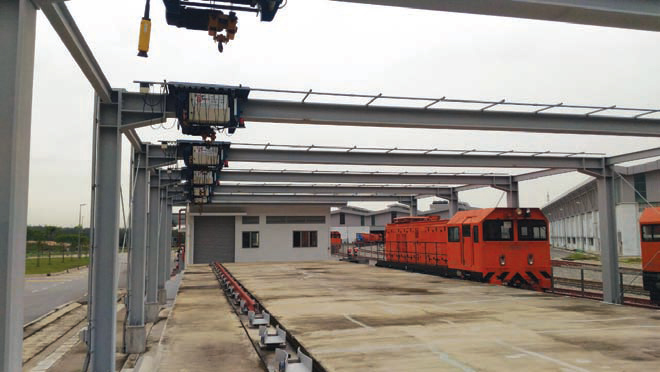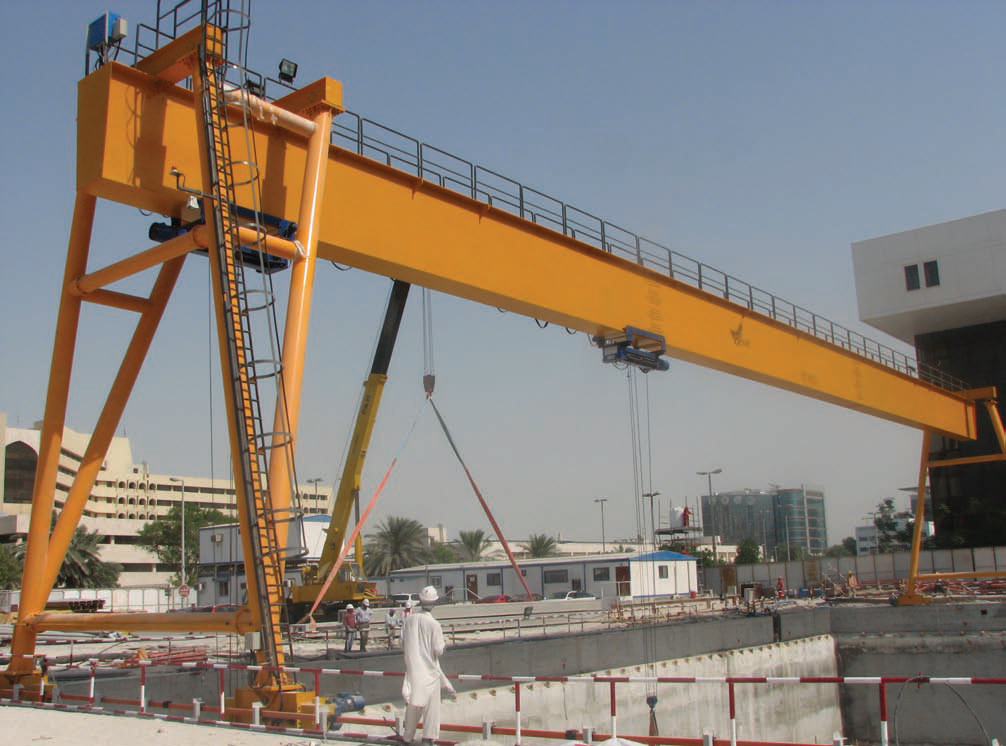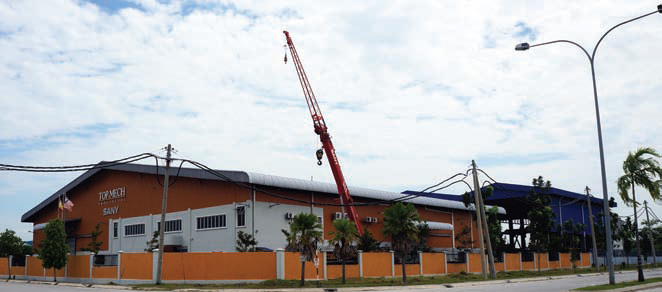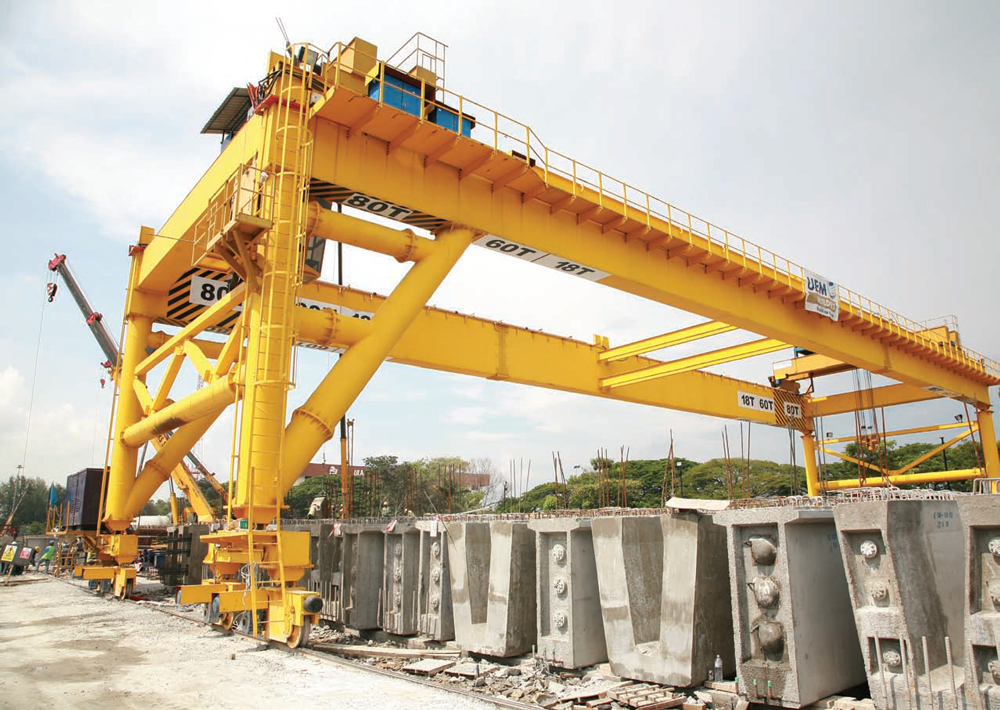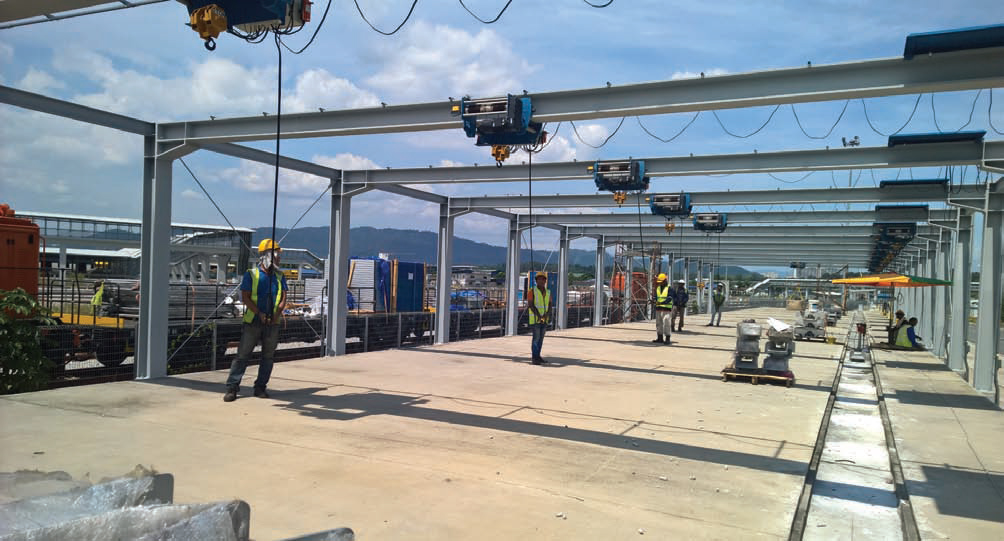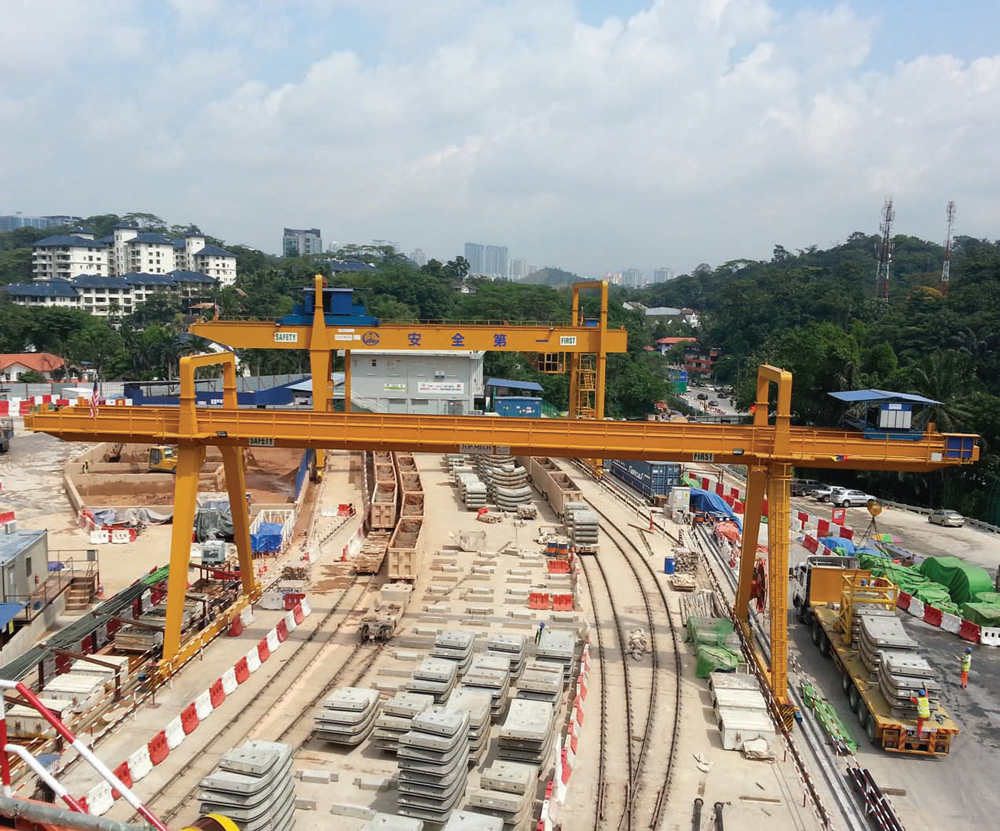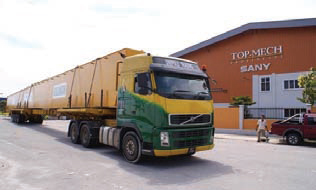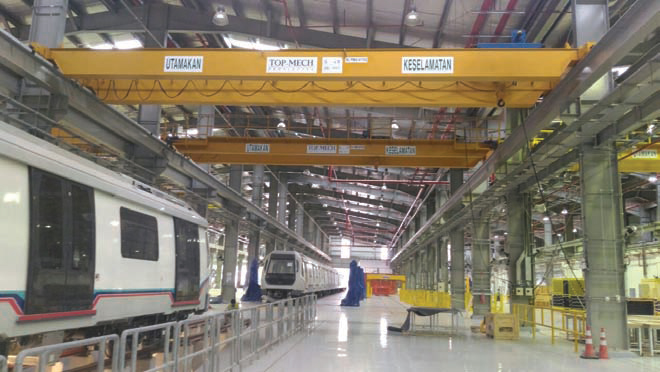Self Directed
24 January 2017Top-Mech CEO Ter Leong Leng tells Bernadette Ballantyne how he has worked to build the company in a tough Malaysian market.
The chief executive of Malaysian crane company Top-Mech Provincial, Ter Leong Leng is a man with a plan. Having steered the company through a challenging period in Malaysia where industry suffered the effects of the oil and gas sector turn down and the depreciation of the Ringgit, Ter is now focussed on growing the company and building on its strengths. “We saw the global economy swinging negatively and it was not encouraging, so we thought we couldn’t just sit and wait helplessly for the global situation to affect us,” says Ter. “We had to do something about it, so we had the management team work together to come up with the proactive measures that we should take to overcome the challenging economic scenario.”
Although the company started out as an overhead crane builder in 1989 it has steadily diversified and now offers design, manufacturing, installation, commissioning and aftersales service for overhead cranes and industrial lifting equipment, as well as providing mobile commercial cranes as a dealer for China’s Sany since 2008. “From just being an overhead crane company we have evolved into a more comprehensive crane company able to also supply other types of cranes, such as mobile and crawler cranes,” says Ter. “It made sense for us to do it because back then many people came to us for various types of cranes that we did not supply, so we lost out many times. The same customers required overhead cranes, mobile and other types of cranes. Our vision is that we are a crane company that people come to for any type of crane.”
Ter’s vision is for the company to be a provider of bespoke lifting equipment that can meet all of the lifting needs of its customers. “Our strength lies in our customisation. We have done a hoist customised at 108m height. We are very competitive in terms of customised cranes compared to standard cranes.
One of the reasons [for this] is the technology transfer from Canada so we have the knowhow. And doing customisation in Malaysia is much more economical than doing this in US or advanced markets. Our cost of labour is still relatively lower,” he says.
The technology transfer from Canada is the result of a technical transfer promoted by both the Canadian and Malaysian Investment Development Authority and the Canadian International Development Agency. The agreement saw Top-Mech partner with Canada’s Provincial International Cranes, which specialises in customising heavy duty cranes, and enabled Top-Mech to expand into the manufacture of electric wire rope hoists. It was also the start of a large expansion for the company which had previously employed around 20 staff. This tripled to 60 after the joint venture and currently the firm has around 100 employees.
“Then we started to export the hoists,” adds Ter. “Because of the localisation we became much more competitive as it was much cheaper than manufacturing overseas because of lower labour and engineering costs. We were able to get more customers especially in the steel industry as well as oil and gas.”
Today exports account for between 15% and 20% of the company’s business which reported a RM68m revenue in 2015. Expanding this is important for the firm. “Malaysia is not a very big market. In order to get the economies of scale, exporting is the only way,” says Ter, noting that the key export markets are Sri Lanka, Bangladesh, Pakistan and countries in South Asia, and South Africa.
Part of its strategy for achieving this growth is the Distributor Development Programme (DDP) where the company supports its overseas dealers in promoting its products. It is planning to strengthen its market share in 11 countries in which it already operates and it has plans to venture into four new ones: Saudi Arabia, Brazil, India and Australia.
It also has an extensive network of branches, subsidiaries and agents worldwide who provide a full range of technical support and after sales services. These include breakdown response contracts, preventative maintenance contracts, and 24/7 on call contracts.
Overseas growth would go some way towards achieving the company’s Vision 2022 which was revealed this year as a five-year development plan for the firm. This is underlined by five strategic objectives of which international distributor development is one. The others are to expand capacity, increase digitalisation within the business, grow revenue and innovation development— including obtaining its own design patent.
These steps build on the measures already implemented by the firm following the economic downturn which saw Top-Mech employ four key strategies to improve performance. These were: control cash flow and cost; promote more creative selling; improve speed of delivery; and have a united staff.
One of the advantages of a downturn is that it gives companies more time to invest in their product offerings. “During the downturn we have tried to make our products outstanding, so putting some special features into our standard cranes such as weighing display which used to be an optional item and we tried to make it standard.”
At the same time the company is seeking to improve automation in its products and is working with Schneider Electric in this area, which is another aspect of its ability to customise.
“We are now in talks with European companies who have automated cranes for waste-to-energy plants as a special application,” says Ter, explaining that the firm has a semi-automatic prototype crane in the factory that it is using as a test base.
Looking to the future Ter says that the Malaysian market itself has begun to improve with overhead cranes and hoists being in demand in several major manufacturing projects including the Petronas Refinery and Petrochemicals Integrated Development; steel mills in the East Coast of Malaysia; and glass manufacturing in Melaka and Negeri Sembilan.
On the construction side the firm has found that Malaysia’s huge infrastructure investments have also created massive opportunities particularly in the railway sector.
One such project is the Klang Valley Mass Rapid Transit System, a key transport investment for Malaysia which involves the construction of three new light rail lines to relieve congestion in Kuala Lumpur. The first two sections MRT1 and MRT2 consist of 103.2km of new light rail with the first phase of MRT1 between Sungai Buloh and Semantan commencing operations at the end of 2016 and the second phase between Semantan and Kajang starting operation in July 2017. The second line, the 52.2km MRT2, will also open in two phases, the first in July 2021 and the second in July 2022.
In 2010, Top-Mech secured a contract with Nanyang Tunnel Engineering, which is part of the China Railway Engineering Corporation (CREC) to supply two gantry cranes to support construction of two underground tunnels. The two double girder gantry cranes each had a 24m span and used an open winch type hoist with lift a height of 9m. Capacities were 15t and 45t. The smaller capacity machine was used to lift tunnel lining segments and the larger crane was for handling the muck trains. The 45t hoist would lift the muck train, and cross travel over the cantilever section of the girder before employing an overturning system to empty the train.
“The design of the Hydraulic mucking train overturning system was a challenge due to the level of customization involved to effectively turn the mucking trains. Our design team managed to overcome this by utilizing a special purpose-built hydraulic system and J-Hooks,” says Ter.
This was followed in 2013 by a contract to supply nine overhead crane units and 24 monorail hoists for the Sungai Buloh KVMRT Depot which houses a central maintenance facility with overhaul facilities for the MRT trains.
The client for the contract was TRC Synergy Berhad, the main contractor for the Sungai Buloh KVMRT maintenance depot. This included the supply of three units of 5t and two units of 10t double girder electric overhead traveling cranes for the rolling stock building; two 5t and a 10t double girder electric overhead traveling cranes for the infrastructure workshop; a 2t double girder electric overhead traveling crane for underfloor wheel lathe; and 24 units of 2t monorail hoists for the track maintenance area.
The KVMRT contract highlights Top- Mech’s ability to customise its cranes. For example, the cranes required automatic safe load indicators with overload cut out devices. The ASLI functions in accordance to BS7262:1990 and uses a buzzer and flashing amber light to indicate when the loading of the crane falls within the range of 92%–93% of its SWL. When the load falls within 97% to 98% of its SWL, the warning is replaced by a continuous bell and a flashing red light indicator. The overload cut-out device shall be provided to prevent damage to the lifting system. A two position test button was provided on the control pendant to test the function of the ASLI system. One position for testing the first warning and the second for second warning.
A digital load display was also provided on the girder of each crane. All brakes on the crane were equipped with a device connected to the condition monitoring system where the condition of the brake pads is displayed.
In addition, visual and audio warning were provided to warn the crane operator if the brake pads are excessively worn.
If the brake pad has been worn down to a level unsafe for operation, the crane operation is automatically terminated. A jogging function for lifting was developed to assist small incremental vertical movement.
Reverse plugging protection was also provided in the control circuit of the trolley and crane motors.
It consists of one contactor controlled by a timer preventing the normal starting sequence from occurring until the plugged motor is essentially at rest. Operating hour counters were provided on all cranes.
